Nightingale singing in a tree © Andy Hay
1
Why do nightingales sing at night?
Male nightingales that sing throughout the night are thought to be single birds, trying to serenade migrating females down as they fly over.
2
When do nightingales arrive in spring?
The date when nightingales arrive in the UK is getting significantly earlier, probably due to climate change. For example, the average first nightingale record in Sussex during 1962-93 was 13 April but in 2006-15 was 4 April.
3
Do male and female nightingales sing?
The nightingale and its song is often quoted in literature and poetry as a metaphor for love, beauty and for poetry itself. However these frequently refer to the singing nightingale as a female when it is actually the male that sings.
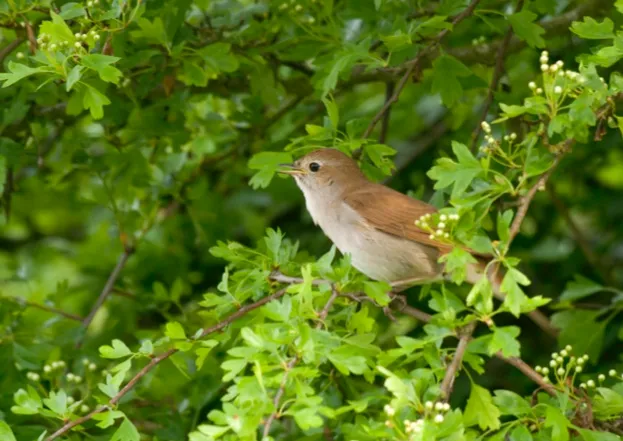
4
Where do nightingales nest?
You might expect a nightingale - a bird of thickets and woodland - to nest in trees, but it builds its nest on or just above ground level.
5
Where do nightingales go in winter?
In 2009, for the first time, some British nightingales were fitted with tiny geolocators. One was re-caught in the UK in 2010, revealing its 4828km outwards journey to wintering grounds in Guinea, West Africa.
6
What do nightingales eat?
Nightingales feed mainly on insects, mainly through foraging on the ground, and in particular are partial to ants and beetles.
7
Are nightingales getting rarer?
Nightingales are estimated to have declined by 90 per cent in the last 50 years, thought to be due to a mix of factors, including climate change but also increased numbers of deer nibbling away all the dense woodland understorey, which the nightingales need to feed and nest in (see fact 4!).
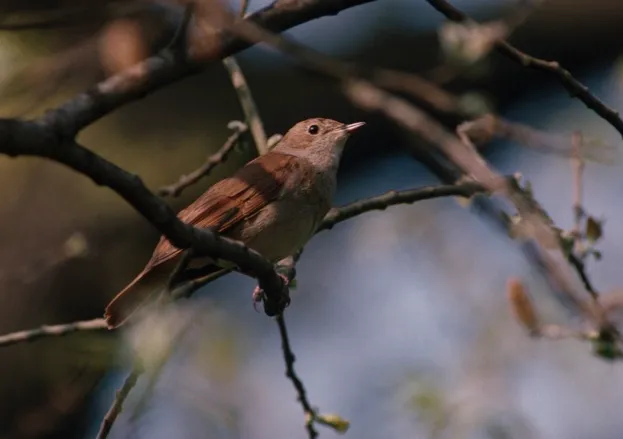
8
What threats do nightingales face?
As well as the large-scale issues listed above, nightingales have also faced other threats in the past. In the 19th century, birdcatchers caught large numbers of nightingales for the cagebird trade to try and 'capture' its song. Most quickly succumbed in captivity; those that survived until autumn often killed themselves, dashed against the cage bars as they tried to follow their migratory urge.
9
The first song on the radio
The first ever live radio broadcast of birdsong was of a nightingale in 'concert' with the cellist, Beatrice Harrison, on 19 May 1924 in Oxted, Surrey. It and repeat performances, on the same date in subsequent years, were so successful that Beatrice received 50,000 fan letters.
10
What makes a nightingale's song so special?
Nightingales have an astonishingly rich repertoire, able to produce over 1000 different sounds, compared with just 340 by skylarks and about 100 by blackbirds. This is because the part of the brain responsible for creating sound is bigger in nightingales than in most other birds.
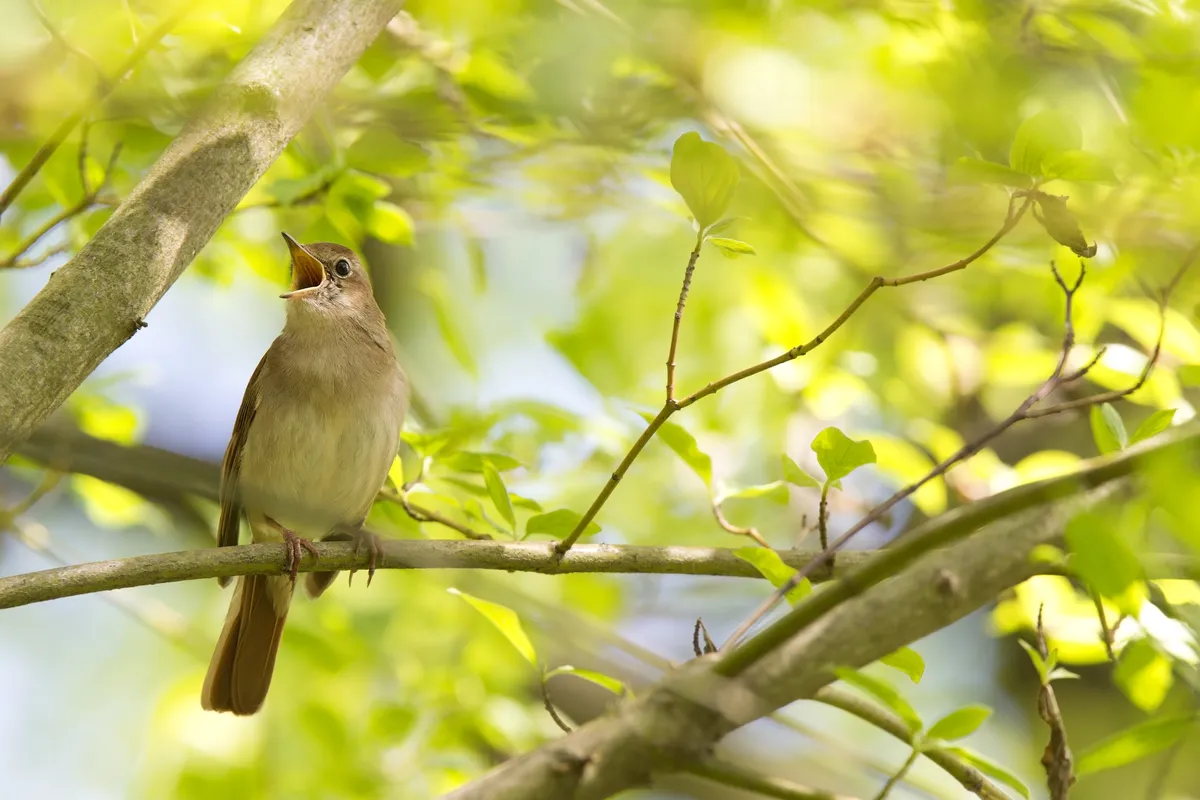
Where to see nightingales in the UK
In Britain, nightingales favour scrub, often near water, and open or coppiced woodland. They occur south of a line from the Severn to the Humber, and are scarce birds nowadays – so you’re unlikely to encounter them away from favoured haunts.
Here are the ten places you are most likely to hear the birds. Many are nature reserves and offer guided nightingale walks between late April and early June.
1 Fingringhoe Wick, Essex (Essex Wildlife Trust)
2 Blean Woods, Kent (RSPB)
3 Cliffe Pools, Kent (RSPB)
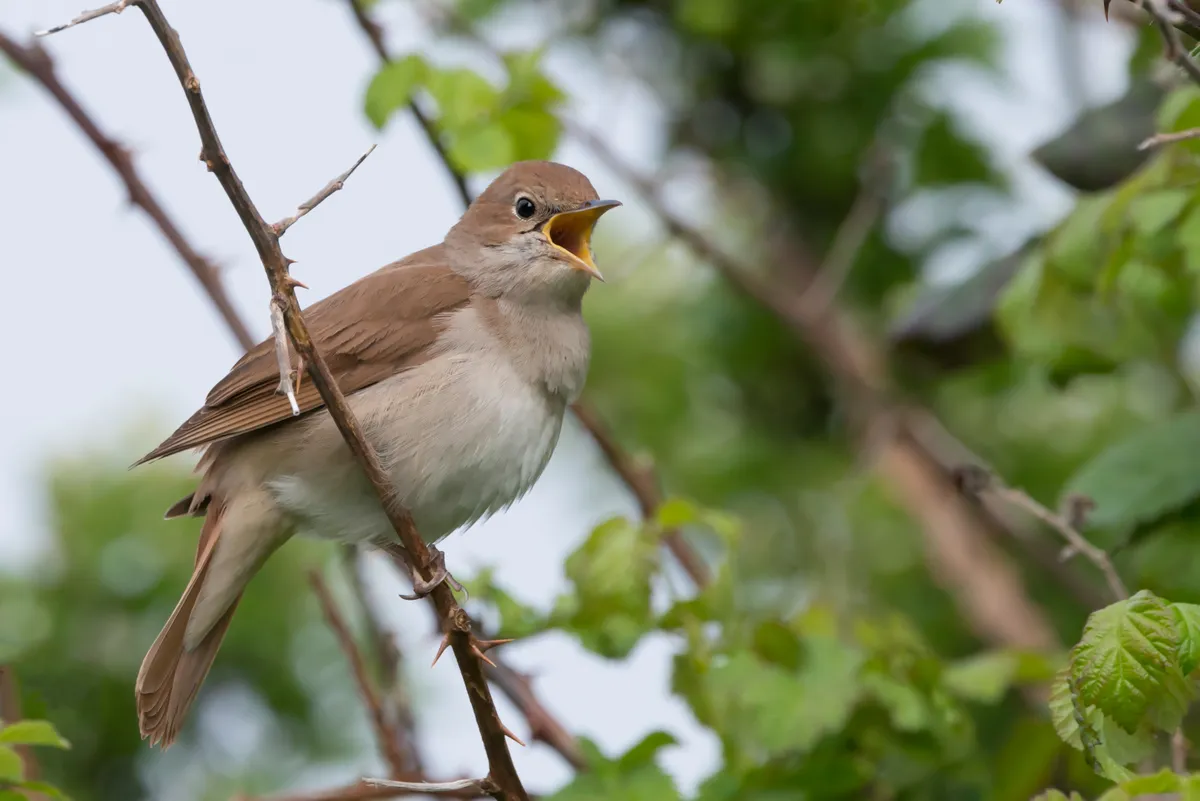
4 Lackford Lakes, Suffolk (Suffolk Wildlife Trust)
5 Alton Water, Suffolk (Anglian Water)
6 Paxton Pits, Cambs (Huntingdonshire District Council/Friends of Paxton Pits Nature Reserve)
7 Whisby Nature Park, Lincs (Lincolnshire Wildlife Trust)
8 Knepp Castle Estate, Sussex (Knepp Wildland Project)
9 Woods Mill, Sussex (Sussex Wildlife Trust)
10 Swillbrook Lakes, Cotswold Water Park, Wilts/Gloucs
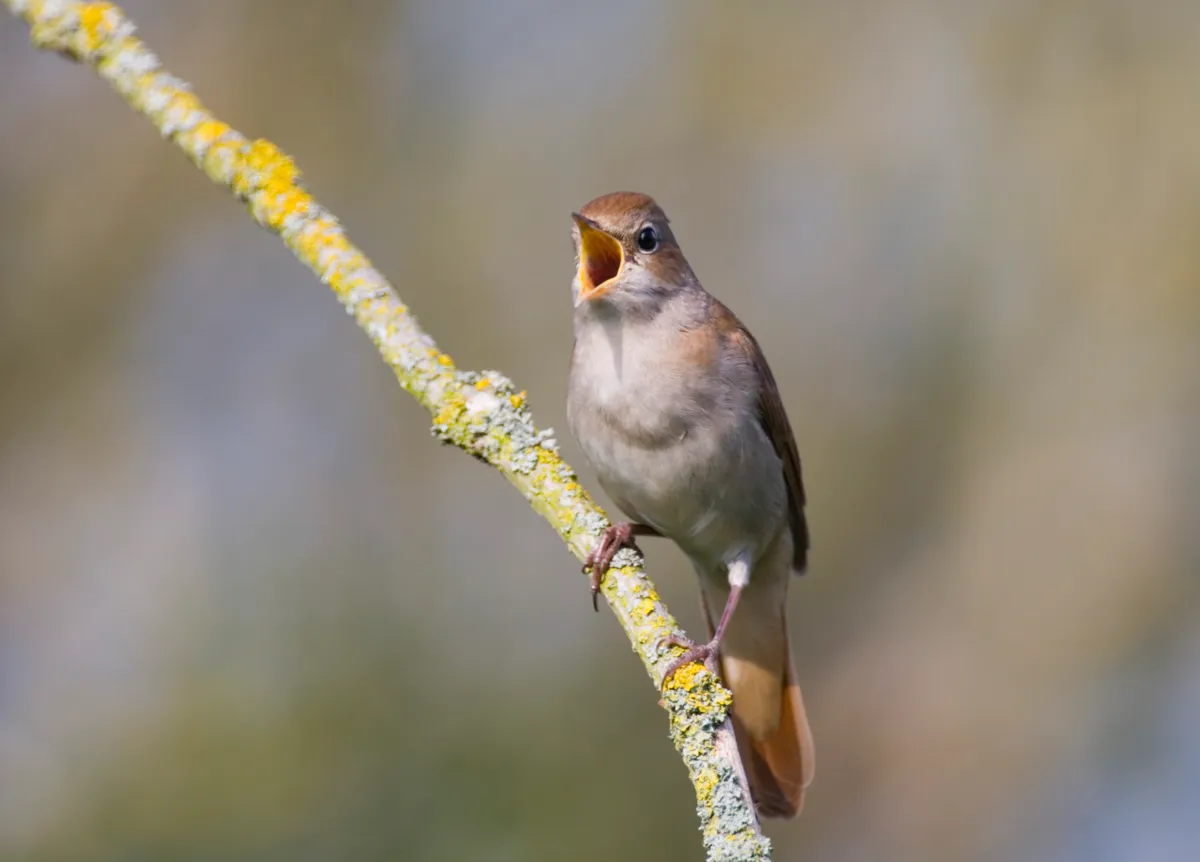
Is it a nightingale?
One of the commonest mistakes is to assume that any bird singing sweetly after dark is a nightingale; it’s much more likely to be a robin.
Nocturnal singing by robins appears to be on the increase, perhaps triggered by street and security lighting.
Blackbirds and song thrushes also sometimes sing at night. But while both are impressively melodious, neither is a match for the sustained strength and pizzazz of a nightingale, which BBC naturalist Brett Westwood has compared to a “jazz musician, improvising on a theme”.
The nightingale’s song is perhaps most easily confused with that of the blackcap.
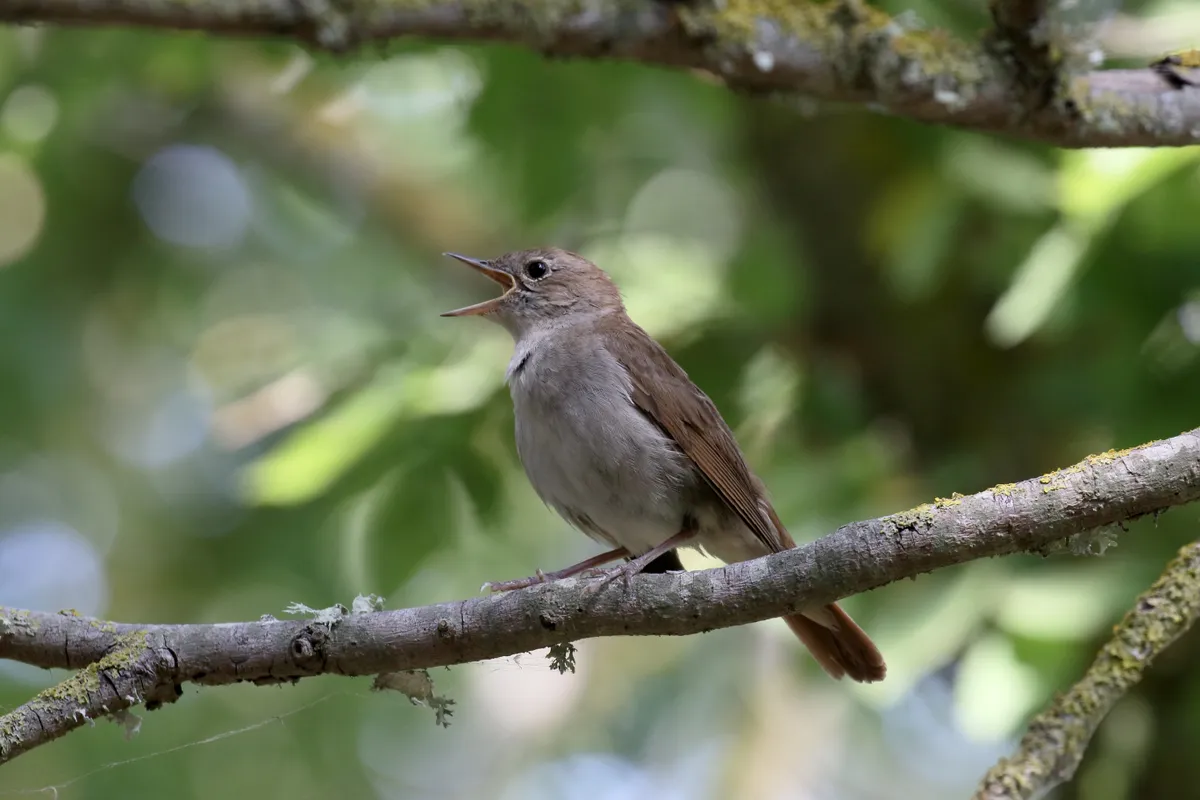
This common warbler sings by day, often in the same scrubby or open wooded habitats as the nightingale, and it also has a rich, bright, loud voice with real vigour.
However, its song is much less varied in pace and pitch, and lacks the nightingale’s ‘jug, jug, jug’ notes.
Top resources
● Compare birdsongs at www.xeno-canto.org and www.rspb.org.uk, and with past episodes of Radio 4’s Tweet of the Day:
● Watch a BTO video on how to identify birds singing at night, featuring the robin, blackbird, song thrush and nightingale
